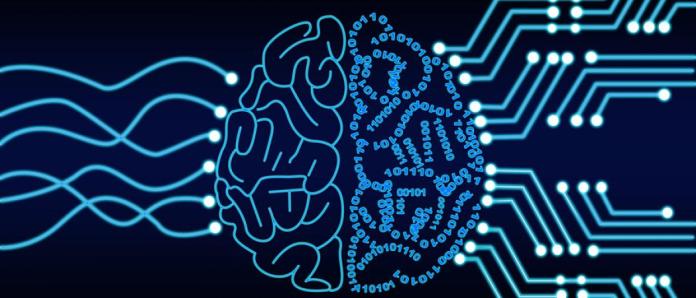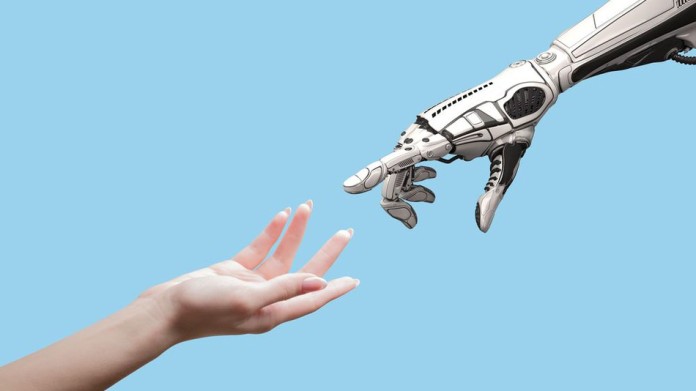Assignment 4: Artificial Intelligence

Artificial Intelligence
AI is a branch of computer sciences that emphasizes the creation of intelligent machines that work and react like humans, it has become an essential part of the technology industry. According to Stanford professor John McCarthy (also known as the father of AI), artificial intelligence is “the science and engineering of making intelligent machines, especially intelligent computer programs. It is related to the similar task of using computers to understand human intelligence, but AI doesn’t have to confine itself to methods that are biologically observable.”
~ A brief history of AI :
The intelectual roots of AI, and the concept of intelligent machines, can be found in Greek mythology. Intelligent artifacts appear in literature since then, with real and fraudulent mechanical devices actually demonstrated to behave with some degree of intelligence. After WWII, it became possible to create programs that perform difficult intellectual tasks.
- 1936-37 – Alan Turing proposes the universal Turing machine.
-
1950 – Alan Turing publishes “Computing Machinery and Intelligence” in which he proposes “the imitation game” which will later become known as the “Turing Test.”
- 1952 – Arthur Samuel (IBM) wrote the first game-playing program, for checkers, to achieve sufficient skill to challenge a world champion. Samuel’s machine learning programs were responsible for the high performance of the checkers player.
- 1956 – John McCarthy coined the term “artificial intelligence” as the topic of the Dartmouth Conference, the first conference devoted to the subject.
- 1958 – John McCarthy develops programming language Lisp which becomes the most popular programming language used in artificial intelligence research.
- 1970 – The first anthropomorphic robot, the WABOT-1, is built at Waseda University in Japan. It consisted of a limb-control system, a vision system and a conversation system.
- 1988 – Members of the IBM T.J. Watson Research Center publish “A statistical approach to language translation,” heralding the shift from rule-based to probabilistic methods of machine translation, and reflecting a broader shift to “machine learning” based on statistical analysis of known examples, not comprehension and “understanding” of the task at hand.
- 1995 – Richard Wallace develops the chatbot A.L.I.C.E (Artificial Linguistic Internet Computer Entity), inspired by Joseph Weizenbaum’s ELIZA program, but with the addition of natural language sample data collection on an unprecedented scale, enabled by the advent of the Web.
- 1998 – Yann LeCun, Yoshua Bengio and others publish papers on the application of neural networks to handwriting recognition and on optimizing backpropagation.
- 2000 – Honda’s ASIMO robot, an artificially intelligent humanoid robot, is able to walk as fast as a human, delivering trays to customers in a restaurant setting.
- 2007 – Fei Fei Li and colleagues at Princeton University start to assemble ImageNet, a large database of annotated images designed to aid in visual object recognition software research.
- 2009 – Google starts developing, in secret, a driverless car. In 2014, it became the first to pass, in Nevada, a U.S. state self-driving test.
- 2011 – A convolutional neural network wins the German Traffic Sign Recognition competitionwith 99.46% accuracy (vs. humans at 99.22%).
- March 2016 – Google DeepMind’s AlphaGo defeats Go champion Lee Sedol.
And the achievements & advances keep on piling up… history is still being written in the AI department.
Areas where we can see the application of AI :
- Speech Recognition – inter-disciplinary sub-field of computational linguistics that develops methodologies and technologies that enables the recognition and translation of spoken language into text by computers. It is also known as “automatic speech recognition” (ASR), “computer speech recognition”, or just “speech to text” (STT). It incorporates knowledge and research in the linguistics, computer science, and electrical engineering fields.
- Computer vision – interdisciplinary field that deals with how computers can be made for gaining high-level understanding from digital images or videos. From the perspective of engineering , it seeks to automate tasks that the human visual system can do
- Natural language processing – area of computer science and artificial intelligence concerned with the interactions between computers and human (natural) languages, in particular how to program computers to fruitfully process large amounts of natural language data.
- Artificial life – field of study wherein researchers examine systems related to natura life, its processes, and its evolution, through the use of simulations with computer models, robotics, and biochemistry.
- Artificial creativity – The goal of computational creativity is to model, simulate or replicate creativity using a computer to achieve one of several ends: to construct a program or computer capable of human level creativity, to better understand human creativity and formulate an algorithmic perspective on creative behavior in humans or to design programs that can enhance human creativity without necessarily being creative themselves.
- Optical character recognition – is the mechanical or electronic conversion of images of typed, handwritten or printed text into machine-encoded text.

~ Apps:
- Microsoft Translate: multilingual machine translation cloud service provided by Microsoft.
- ELSA: used to improve English pronunciation & speaking skills. It uses advanced speech recognition technology.
- Spotify: this app uses AI to connect with its users, creating daily playlists or mixes, based on what you’ve been listening lately.
- Netflix: thanks to its predictive technologies (like algorithms), Netflix analyzes hundreds of records so it can suggest movies, TV shows and documentaries similar to those you have seen and rated positively. It also considers other aspects as well, like the time of day and what day it is, so it can you better content based on your consumption habits.
Blogs & Websites for further learning:
- Algorithmia is a common API for algorithms, functions & models that allow developers to build next generation intelligent applications. According to a Forbes article, Algorithmia has built the largest market place for algorithms in the world.
- OpenAI is a non profit artificial intelligence research company that aims to promote and develop “friendly” AI in such a way that it benefits humanity as a whole. OpenAI also has a blog where you can find the latest in research, events and updates.
- Machine Learnings is a blog that curates and creates content that according to them, “will prepare you for life in an artificially intelligent world.”
Prominent people in the AI field:
- Elon Musk: founder, CEO & lead designer of Space X; co-founder & product architect of Tesla, Inc; and co-founder & CEO of Neuralink.
- Jeff Dean: computer scientist & software engineer, who is currently a Google Senior Fellow, where he leads the Google Brain team.
- Andrew Ng: co-founder of Coursera & one of the creators of Google Brain, now Chief Scientist at Baidu (a Chinese multinational technology company specializing in internet-related services & products, & artificial intelligence).
- Yann LeCun: computer scientist with contributions in machine learning, computer vision, mobile robotics & computational neuroscience. Director of AI research at Facebook.
- Sebastian Thrun: computer scientist, innovator, entrepreneur educator & one of the leading minds on self-driving cars, founder & president of Udacity (a massive online learning platform) and CEO of the Kitty Hawk Corporation.
Academic References:
- Parnas, D. L. (2017). The real risks of artificial intelligence: Incidents from the early days of AI research are instructive in the current AI environment. Communications of the ACM, 60(10), 27-31. doi:10.1145/3132724
- Kowert, W. (2017). The foreseeability of human-artificial intelligence interactions. Texas Law Review, 96(1), 181-204. Retrieved from https://go.openathens.net/redirector/sagrado.edu?url={URLencode({TargetURL})}
- MAKRIDAKIS, S. (2017). Forecasting the impact of artificial intelligence (AI). Foresight: The International Journal of Applied Forecasting, (47), 7-13. Retrieved from https://go.openathens.net/redirector/sagrado.edu?url={URLencode({TargetURL})}
- Popenici, S., & Kerr, S. (2017). Exploring the impact of artificial intelligence on teaching and learning in higher education. Research & Practice in Technology Enhanced Learning, 12(1), 1-13. 10.1186/s41039-017-0062-8 Retrieved from https://go.openathens.net/redirector/sagrado.edu?url={URLencode({TargetURL})}
- Garrido,. (2017). Brain and artificial intelligence. BRAIN: Broad Research in Artificial Intelligence & Neuroscience, 8(4), 85-90. Retrieved from https://go.openathens.net/redirector/sagrado.edu?url={URLencode({TargetURL})}
~ IMAGE: SHUTTERSTOCK / WILLYAM BRADBERRY // cc licensed ~


